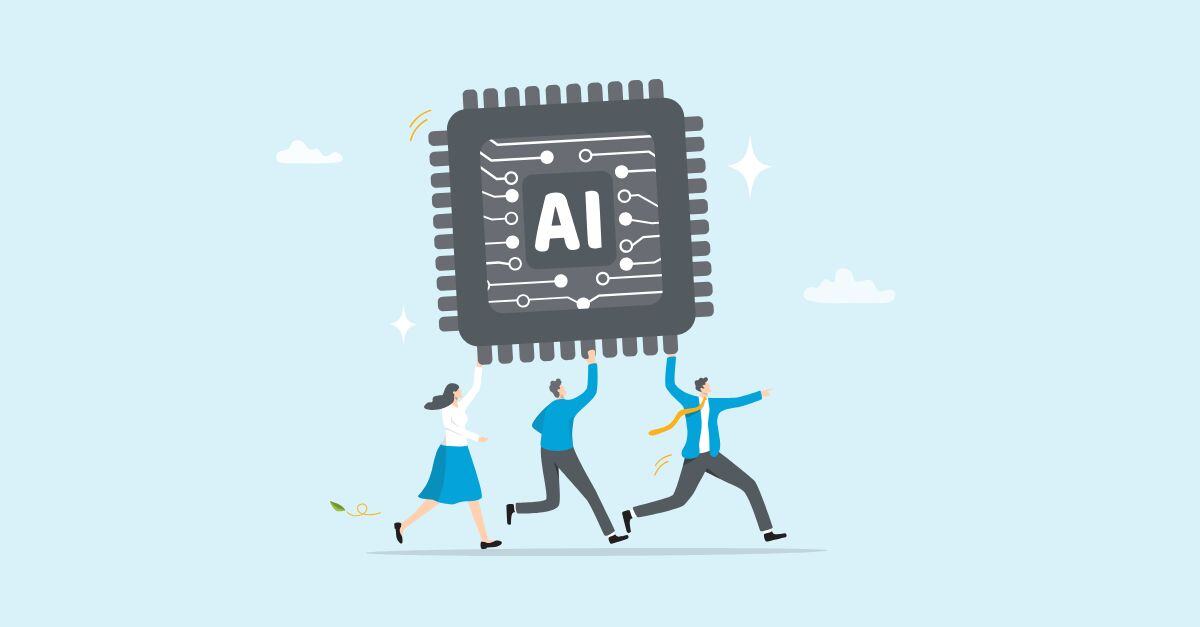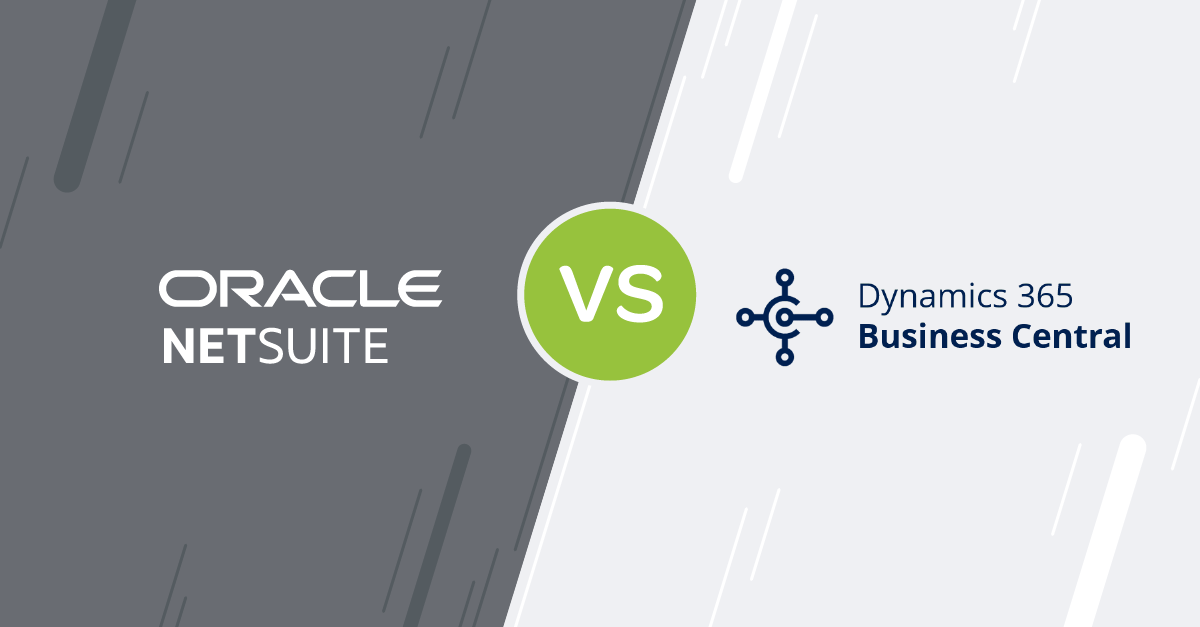Blog
Share this
AI and ERP: What to Expect in 2025

by Carly Caines on February 25, 2025
Artificial intelligence (AI) is no longer just a futuristic concept—it’s a practical tool that businesses are already using! When combined with Enterprise Resource Planning (ERP), AI has the potential to transform how you manage your operations and gain deeper insights from your data. Simply put, AI is making ERP smarter, and companies that take advantage of it now will have a significant edge over those that don’t.
So, what exactly can you expect from AI in ERP this year? Let’s take a closer look.
A shift toward data-driven intelligence
ERP has traditionally been about managing transactions, but AI is shifting the focus towards intelligence.
The real power of AI in ERP lies in how it processes and leverages data—it doesn’t just look at what’s happening inside your business but also considers external factors as well. For example, AI-powered ERP can analyze supply chain trends, predict shifts in demand and refine pricing strategies in real-time. By integrating broader data sets, businesses can gain deeper insights into market changes, customer behavior and operational efficiency.
Think of AI as the brain and ERP as the nervous system. AI makes sense of all the signals (data), while ERP connects everything together. Businesses that embrace AI-powered ERP will have a serious advantage, thanks to:
- Smarter decision-making: AI finds patterns in your data that humans might miss.
- More accurate forecasts: Predictive analytics help you see what’s coming before it happens.
- Better efficiency: AI suggests optimizations based on real-time data.
AI vs. Automation: What's the difference?
What is AI?
AI is a technology that enables systems to learn, reason and make decisions based on data. Unlike automation, AI doesn’t just follow set instructions, it improves over time.
Many people confuse AI with automation, but they are not the same thing! Automation follows predefined rules to complete tasks. For example, analyzing sales orders, demand forecasts and current stock levels to determine when to reorder inventory and in what quantity is simply MRP (Materials Requirements Planning). This type of automation has been around for years and forms the foundation of modern ERP.
AI, on the other hand, goes beyond fixed rules by learning from data. A great example is a system-generated customer summary that includes a headline, an overview of recent interactions, and upsell recommendations. AI analyzes customer data, purchase history and product availability to highlight key insights and suggest cross-sell opportunities, helping you generate more revenue with less manual effort.
Best ERP AI features
AI technologies in ERP systems are not just futuristic concepts—they're practical tools that can supercharge your business today. These tools can help you anticipate market trends, improve decision-making and automate repetitive tasks, all while boosting efficiency and productivity across your operations.
Let’s explore some of the key types of AI that can transform your ERP experience.
Predictive analytics
Predictive analytics forecasts future trends using historical data. It helps your business anticipate customer behavior, product demand or supply chain issues. For example, a wholesale distributor might use it to predict which products will be popular in the coming months, allowing them to prepare inventory in advance.
Machine learning
Machine learning allows systems to learn from new data and improve over time. Unlike traditional systems that rely on fixed rules, machine learning identifies patterns in data and refines its predictions as more information is collected. For example, an ERP system can use machine learning to predict customer behavior or help your business make better decisions based on current trends.
Generative AI
Generative AI creates new content based on data it has processed. This can include writing reports, generating insights or creating various business scenarios. Instead of spending time manually generating reports or forecasts, your business can use generative AI to automate these tasks and get results more quickly.
Chatbots and virtual assistants
Chatbots and virtual assistants use natural language processing to interact with users, answering questions or completing tasks. They can be integrated into ERP systems to help users navigate processes, input data or troubleshoot issues. Chatbots are also helpful for customer service, handling routine inquiries and providing quick support.
Image recognition
Image recognition technology identifies objects or text in images and uses that information to automate processes. For your business, this could be used for things like tracking inventory, scanning documents or checking product quality. One common use case is invoice capture as part of AP automation, where the technology extracts data from invoices to streamline processing. By automating visual inspection tasks, image recognition helps reduce errors and minimize manual work.
The future of AI for your business
So, what’s next? The role of AI in ERP will only continue to evolve, with more advanced capabilities to help your business. Here’s what to expect:
1. Advanced data analysis for forecasting
AI will process even more extensive datasets to refine predictions—whether it’s sales trends, market demand or operational costs. Your business will have a stronger competitive edge if you leverage AI-driven forecasting.
2. Smarter recommendations and insights
ERP systems will become more proactive, offering tailored recommendations to optimize pricing, inventory and workforce allocation. Expect AI to act as a business advisor rather than just a tool!
3. Predictive risk management
AI will not only flag potential risks but also suggest preventive actions. For example, AI can detect financial anomalies before they become critical issues or identify supply chain weaknesses before they cause disruptions.
Preparing your business for AI
AI has the potential to revolutionize how your business operates, but its effectiveness depends on one crucial factor: data. If your business data is scattered across multiple systems, and contains duplication and inaccuracies, your ability to adopt AI will be severely limited. Here’s how to prepare:
- Clean Your Data: Ensure your records are accurate, complete and standardized
- Consolidate Your Systems: If your data is scattered across spreadsheets and disparate systems, AI won’t have much to work with. Bringing everything together in one place makes it easier to get reliable insights and put AI to good use.
- Set Realistic AI Expectations: AI isn’t magic—it can only work with what you give it. If your data is incomplete or inconsistent, the AI-driven insights won’t be reliable. The goal is to optimize your data before implementing AI solutions.
Even if AI isn’t on your immediate roadmap, preparing your data now will make future adoption much smoother. Focus on organizing, standardizing and consolidating your data so you’re ready to make the most of AI when the time comes.
We know that for many small and mid-size companies, the move to a business management software like ERP software can feel overwhelming. Figuring out how to implement AI just adds another layer to that, but the long-term benefits—greater efficiency, better insights and a competitive edge—make it a move worth considering.
Share this
Stay in the Know!
Join other SMEs who receive our monthly ERP insights, tips and best practices.
You may also like

ERP Funding for Canadian Businesses

Should You Work with a NetSuite Implementation Partner or Go Direct?



